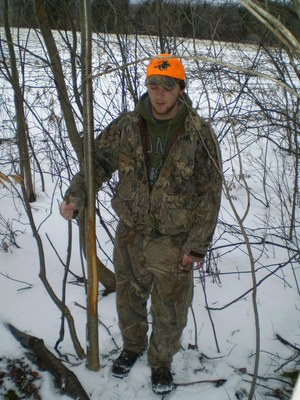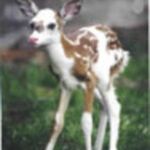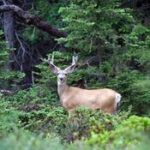The old craft of reading is an experience skill. Reading the buck rub correctly, takes time, practice and patience; there is much to be learned. Reading takes on subtle differences from region to region, terrain, weather and other hunting factors. But the information gleaned from buck rubs is a key factor in consistent success at having plenty of healthy and flavorful cuts of venison stored for the winter.
Sure, hunting is about luck, the right place at the right time, and certainly, high tech fire power and scopes and hunting gear, have certain roles in successful whitetail deer hunts. While there are plenty of hunting tips, hot-spots, and other whitetail signs, early attention to the buck rub ensures better odds for a harvest and a legendary trophy, even with the old time slug and shotgun, open sights hunting.
Long before the opening bell of any deer season: archery, muzzle loader or rifle, dedicated, and lucky hunters are in the woods scouting for signs. It could be a leisurely walk in the woods, cutting firewood, even during the early autumn squirrel season, or a simple scouting check to an old hunting haunt. The time spent in late summer and very early fall offers the opportunities and adventure for the whitetail deer weeks ahead.
Whitetails leave signs and the rub is an important one. In late August and into September, while there is still heavy tree and bush cover, bucks are using the trees to rub off the velvet on their antlers. Later, in about a month with shorter days and cooler temperatures, the reckless deer rut comes into play. Buck rubs are a process. The bucks are communicating, sending messages to one another via the buck rub.
The woods are perfect in the late summer; the days and evenings cooler, bugs and other annoying insects are not quite as numerous; there’s plenty to observe from mast crops, wildflowers and herbs, turkey, other wildlife, squirrel caches and whitetails in the heavy brush and vegetation.
These first rubs at this time of year are generally infrequent and difficult to see but are a good indicator of buck presence. Early buck rubs are important first indicators of deer trails or pathways. The early rubs can help the best spot be used to located a stand, a first glimpse into what could be a trophy buck and his movements.
The early rubs can be seen along wood lines near a food sources such as a cornfield. Rubs can also be seen in the woods along routes which lead to nut trees like oaks, beechnut and hickory or a water source. Much like the whitetail buck, the hunter needs to be familiar with the territory.
The largest and most dominant bucks usually begin to rub early; the presence of a buck rub early is a sign of a possible trophy. Younger bucks generally begin to rub later, depending on weather and environmental conditions, about mid-October.
A dominant, good sized buck can make upwards of 300 rubs during the year; smaller bucks less. A lot of early rubs in a particular area is an indicator to pay attention, this is likely where a big buck spends much of his time. It is often called a core area, a key area or a bedding area.
Most hunters would agree that, once a key buck area is discovered, the best location to choose for a hunting stand should be 50 or more yards away and along a trail leading to the bedding or core area. For better hunting odds, select the location early. If the buck senses changes in his bed area, as the rub process continues into the rut rubs, he will likely be spooked by the human smells and sights and move.
The good strategy is to place a hunting stand early in the season along the buck route. The buck will tend to become familiar with the stand while there is no hunting pressure. Some hunters will use two stands along a trail route. One for morning hunts and the other for late afternoon when the bucks are leaving the core area.
All bucks make rubs, both large and small, on trees large and small. However, only big bucks make big rubs. A large rub means a large deer with significant antlers. There is one exception (as usual). An original buck rub can become a community buck rub with several bucks rubbing the tree. A big buck, however, tends to hit the same trees a trait uncommon with smaller bucks. A pattern of large buck rubs on some large trees in an area, signals the presence of a big buck using the area an area in which attention to details becomes a requirement for success.
Deep gouges in the bark of a tree are a telltale sign of a big buck activity. Smaller bucks generally do not rip and gouge a tree, it takes large, powerful antlers. Other signs are broken branches and twigs and weeds. Taken together these signs point to a nice sized white tail buck whose claiming his territory. Oftentimes, there will be deep gouges and shredded bark at the base of a large tree four or five inches or larger in diameter. It is a fortunate sign for the hunter, there a trophy waiting to be harvested. This buck is communicating loud and clear.
A buck rub usually indicates the direction of travel; a rub on one side of a tree indicates the buck approached from that area. Rub marks on all sides of the tree indicates the buck travels that area with frequency either for feeding or going to the core or bed area.
As the rut comes in around late October early November, bucks tend to make significant large, rubs to claim their territory; they are telling the younger bucks to stay away. Usually, these rubs are on the larger trees and frequently scape signs can be found close by.
There is much to be learned from a whitetail buck rub, it is the old craft of reading. It is a skill not really learned in magazine articles, blogs, videos and television hunting programs. It is a skill learned in the woods.





